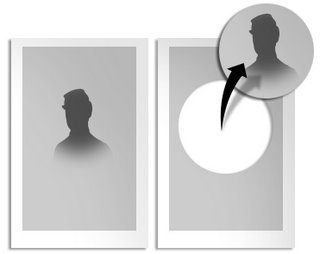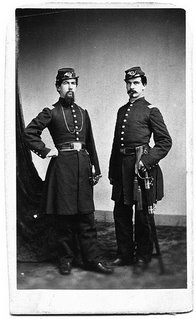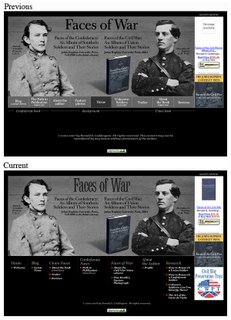Cut Cartes

A collector contacted me this week with a question about her recent purchase of an album full of cartes de visite of soldiers from the Fourth New York Heavy Artillery. Some of the photographs had been meticulously cut out: Someone had taken a fine blade and cut circles and/or ovals around the image of each soldier image, right through the paper and mount. See the diagram at right. This same individual, or someone else, replaced the cut circles back and reinforced the back of the mount with tape. The tape is very old, not at all modern.
The collector emailed me scans of the photos, and a complete list of all the identified soldiers in the album. Her question: Have I ever seen this done, and why would someone cut cartes in such a careful way?
I've never seen such an example. As for what motivated the cutter, I ventured a guess and replied: "The cutout images are a first for me. My suspicion is that each round cutout was separately attached to a piece of cardboard or heavy paper, and photographed for use in a book. I would not be surprised if it was for the regimental history book. In fact, there are two. The first, Heavy Guns and Light: A History of the Fourth New York Heavy Artillery, was written by Hyland Clare Kirk (1846-1917) and published in 1890. The second book published, Diary of a Line Officer, is the journal of Augustus Cleveland Brown (1839-1915). It was published in 1906. You have his carte de visite in your collection!"
Turns out this theory is correct, for the cutout images appear in Kirk's book. A history mystery solved!



